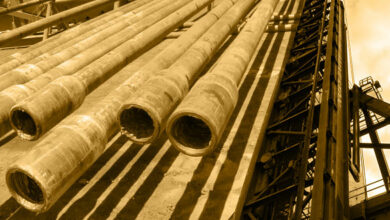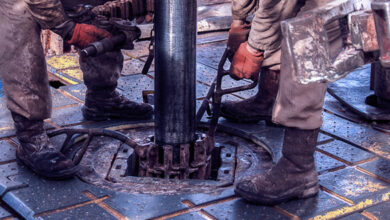IADC: An association by our members, for our members

By Jason McFarland, IADC President
With the start of the new year, I’ve been reflecting on the idea of purpose. At IADC, our purpose is our members. One of my favorite aspects of working here is the member-driven, member-led mentality that resonates throughout the association.
“How will this add value to our members?” lies at the core of every decision we make. This perspective permeates the culture of our organization. I was introduced to this concept of always putting the members first early on in my career at IADC when a colleague and mentor, Ken Fischer, shared an article that really encapsulates what it means to be a member-centric organization.
The article, “Association Management Adages & Aphorisms,” was published in an association management magazine in 1995. It remains as relevant today as it was when I first read it.
One of the most impactful insights from the article is this idea: “The association is its members, not its staff. Never forget that members own the association.” Everything IADC has accomplished in its 80+ years of existence has only been possible due to the dedication of our members volunteering their time, effort and expertise for a collective cause. Our members volunteer an astonishing 20,000+ hours every year in a variety of capacities. Another insight from the article reads, “The people who pay the fare decide where the ship will go. Likewise, the people who pay the dues….” IADC’s energy, resources and focus go into the projects and goals our members deem most important.
A great example of how our members guide the association’s course of action is through their influence on the continuous transformation of our well control training accreditation programs. Investigation reports from Macondo concluded that a different approach to well control training was needed. This topic was discussed at length during IADC Well Control Committee meetings, resulting in members deciding that the association’s resources could be utilized to completely redevelop its well control training program at the time, which was WellCAP.
This decision led to the establishment of the WellSharp Advisory Panel, comprised of members who collaborated to determine what this new era of well control training should consist of and how to go about implementing those changes. After hundreds of hours of work put in by dozens of volunteers, IADC’s revamped well control training program – WellSharp – launched in 2015 to provide a higher level of comprehensive well control training standards.
The WellSharp Advisory Panel and Well Control Committee continue to meet and find ways to further enhance our well control training offerings. The needs of the industry change over time, and our focus must shift accordingly. These members remain flexible, always integrating industry feedback in order to fine-tune our programs. Recent well control training offerings have been created to meet these ever-shifting industry needs. These programs include KREW, WellSharp Live and WellSharp University.
Another excellent example that highlights IADC’s member-driven nature involves the current project to revolutionize our Incident Statistics Program (ISP) database. The ISP has been tracking safety and incident information for the drilling industry since 1962. There are currently 73 active participant companies, and over 280 million manhours were reported in 2021.
Members expressed a desire to make the process of entering and accessing ISP data more user friendly. The ISP database currently utilizes Microsoft Access, which may have been cutting-edge technology when it was released in the 1990s but is now outdated and has resulted in the ISP data entry process becoming time consuming and redundant. This reminds me of another insight from the association management article: “ ‘We’ve always done it that way’ isn’t necessarily a reason to change, but it isn’t a reason to keep doing something the same way either. It’s probably a reason to review the procedure.”
The fact that members were expressing a desire for the ISP process to change provided ample reason for the procedure to be reviewed. The IADC ISP Subcommittee has been discussing different options, vetting partner vendors and presenting a plan of action. This initiative, like all others that came before it, is being implemented by our members, for our members.
The ISP’s proposed new incident statistics system will involve an online portal with secure modern features. It will enable a streamlined process with increased efficiency for members and better participant experience, as well as improved reporting integrity and timeliness. We’ve never done it this way before, but in this case, the improvements and changes are both necessary and welcomed.
Toward the end of the “Association Management Aphorisms & Adages” article, there’s a section that reads: “You’re in the wrong line of work if you don’t believe what you’re doing makes a difference – to your members, your industry or profession, and society at large. Associations are in the business of working to constantly further and improve something for others.” I wholeheartedly and steadfastly believe that what IADC is doing makes a difference to our members, the drilling industry and society. As an association, it is our responsibility and our honor to continuously advance the drilling industry and to make improvements that will better the lives of our members. We’re grateful for how our members show up for us, so that we can continue to show up for them. DC




